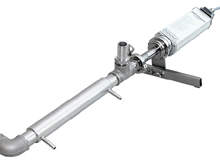
One of the great challenges facing the energy hungry countries of the Western world is to replace the petroleum-based diesel obtained from crude oil with more environmentally friendly biodiesel. Both the EU and the US are introducing targets to introduce greater levels of biodiesel to the consumer in the next five to ten years.
One of the great advantages is that biodiesel can be produced from a number of sources, including animal fats and plants. The fact that biodiesel can be grown and produced from plants has another positive effect in that the plants carry out photosynthesis and remove carbon dioxide from the air.
Growing biodiesel could be a sustainable process, using the energy of the sun and waste CO2 to produce useful lipids that can be processed into biodiesel fuel. This could be a useful natural solar panel transforming sunlight into the chemical energy of oil.
Algae
But which plants have the highest yield of oil per acre? One of the highest yielding conventional plants is Chinese Tallow (with 699 gallons per acre) but by far the winners are certain species of algae that can yield more than 10,000–15,000 gallons of oil per acre.
To compare to conventionally farmed oil seed crops, soybean plantings can produce 50 gallons of oil per acre and rapeseed fields produce about 130 gallons of oil per acre. Algae can be very easy and rapid to grow and can stand harsh conditions such as salt/brackish water and harsh desert sun.
In the US the Office of Fuels Development, a division of the Department of Energy, funded a program through the National Renewable Energy Laboratory (NREL) called the Aquatic Species Program to investigate high oil content algae species between 1978 and 1996, and this concluded that it was feasible to use algae oil production to completely replace petroleum as transportation fuel in the US. Growing the oil is only the start of the story; it still needs to be extracted and
processed to produce a biodiesel of an acceptable ASTM specification to be sold commercially.
Traditionally the farming of the algae was carried out in open tanks but these were subject to contamination by viruses and other micro-organisms (also oil yields were poor). Present technology favours the siting of algae farms near to a source of animal waste for nutrients and a source of sterile carbon dioxide (a coal-fired power station), and the use of an enclosed system such as polyethylene tubes in which to grow the algae. NREL research has estimated that it would
require only 9.5m acres of algae crop to supply the entire US oil requirement – far less than the present 450m acres used in the US for conventional crop farming and the 500m acres used to graze livestock.
Commercial processes
While algae oil has not yet hit the mainstream, interest in the product and the development of technology are evident. The Algae Biofuel Summit 2008 was held recently in New Delhi, India in September 2008 and this meeting highlighted the importance of being able to farm algae to produce lipids using waste animal and human material as well as sequestrating carbon dioxide at the same time.
Heilscher USA has developed interesting new technology for the extraction of oils from the algae using ultrasonic cavitational mixing. In this process ultrasonication improves the extraction of oil from the algae cells and its subsequent conversion to biodiesel.
At present there are numerous methods for extracting the oil, such as pressing, hexane solvent wash and ultrasonic extraction. The use of ultrasonics helps greatly, as it helps to break down the algae cell structure and expose more of the oil for extraction.
The high-pressure cycles of the ultrasonic waves support the diffusion of solvents, such as cyclohexane, into the cell structure and the transfer of lipids from the cell into the solvent. The disrupted cell tissue can then be filtered off and the cyclohexane mixture distilled to separate off the oil.
Ultrasonics can also be used in conjunction with certain enzymes to break down the algae cells and facilitate oil production in the absence of a solvent. Heilscher has also put forward ultrasonication as the best method to convert the oils produced from algae via transesterification to an acceptable quality of biodiesel using a continuous process rather than a batch process.
The method uses less methanol than conventional methods, is quicker and allows the glycerol by-product to be centrifuged off at the final stage.
Commercial scale facility
In August 2008 Renewable Energy Group (REG) a leading company in biodiesel production in the US based in Ames, Iowa, announced that it has developed scalable commercialisation technology capable of refining and producing large volumes of high-quality algae biodiesel from a variety of high-yielding algae strains. The product exceeds the present ASTM D6751 and EN 14214 quality specifications set for commercial biodiesel.
The pilot scale plant is ready to use available feedstocks from new algae oil production partners so that REG can augment the pretreatment and production of algae biodiesel in continually increasing volumes as part of its continuous flow, commercial-scale process technology. Following the commercialisation process the crude algae oil is cleaned and refined using the REG pretreatment technology.
It is then converted to biodiesel using a tran-esterification system similar to that in the current commercial-scale biodiesel production process. REG biodiesel is marketed under the REG-9000 biodiesel brand through large petroleum companies and fuel distributors.

